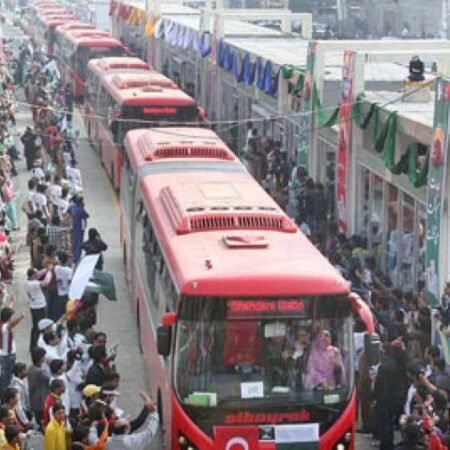
Pakistan Institute of Development Economics
- Home
Our Portals
MenuMenuMenuMenuMenuMenuMenu - ResearchMenuMenuMenuMenuMenuMenuMenu
- Discourse
- The PDR
- Our Researchers
- Academics
- Degree Verification
- Thesis Portal
- Our Portals

Public Transportation System and Female Mobility in Pakistan (Blog)
Identifying Issues in Pakistan’s Public Transportation System
Pakistan is one of the most urbanized countries of the world and the most urbanized country in Asia Pacific with two-third of its urban population living in the ten large cities. On organizational and functional fronts, the country has been undergoing random changes in the urban localities which on one level is creating bottlenecks for the survival of the poor and on the other, the issues of overcrowding, urban poverty and inaccessibility of basic services are being experientially faced by the poor.
With lower average income, only the rich can afford to possess private vehicles for their mobility and for the majority, job-related trips depend on the public transport system. These issues are gradually seeping into public and discursive debates of Pakistan’s politics and academia recognizing that the poor, unemployed, elderly and women are the most adversely effected. Hence, it is compulsive to frame an inclusive transportation system that provides affordable, environment-friendly and culturally sensitive transportation facilities.
The Issue of Female Mobility
A report titled ‘Approaches for Gender Responsive Urban Mobility’ specifies security as a complex phenomenon as it depends upon human interactions whom behaviors are unpredictable and contingent on emotional over rational reactions. Safety on the other hand can be assured through technical solutions but improving safety system does not always ensure improvement in security system. Security is more subjective as different people define ‘what is safe?’ and ‘what is secure?’ differently.
The variants in the perception of security between men and women and even among women exist due to differences defined along the axis of economic background, age, race, education and cultural contexts. Speaking of human security, female mobility is also contrived because of the violence and harassment women face when they are in public spaces in general or public transports, in particular. The number of harassment cases and the forms it takes show that name calling, teasing, staring, touching, groping etc. are common in the public transports which women use to travel to and from for educational and job-related reasons.
All the developing countries report a number of harassment cases and the types of harassment women face in and around public spaces and public transports. In South Asia the debate about violation of these spaces roared with the gang-rape and murder of a young student when she took a bus to return home in Delhi. In India, a report compiled by Jagori (2010)[1] highlights that more than 90 percent of women have faced sexual harassment in previous year while using public space, 51 percent experienced harassment in public transports and 42 percent while waiting for buses at bus stops/stations.
Contextualizing the Issue in Pakistan
A report published by Asian Development Bank (2014)[1] corroborates that 70 percent of Pakistani women who use public transport faced harassment. 75 percent claim that the perpetrator was another unknown passenger; 20 percent say it was conductor and 5 percent that it was driver. 34 percent of women reported incidents of inappropriate touching or groping. 7 percent shared experiences of stalking and unwelcoming following. The ADB report highlights significant impact on the female mobility due to harassment in public spaces and on public transports. 31 percent of students, 23 percent of working women and 20 percent of homemakers decreased the use of public transport. 40 percent restricted traveling after sunset which reduced their chances of employability.
In addition to religious-cultural factors, poor urban planning also circumvents women from becoming part of labor force. This happens by circumscribing their comfort to use public transport.
Conclusion
Some steps which can be operable to ease female mobility and assure female security in and around public spaces and transport can be taken. Street lighting should be consistently maintained without power shortages. Installation of khokhas near each public transport station will also ensure mobility of people for consumptive reasons. This will lead to having more watchful zones conducive for female security and mobility. Transport schedules should be consistently updated and displayed for public consumption so that women arrange their trips accordingly. Hiring of female bus-conductors and ticket-checker/collector can also be a workable framework for easing female mobility and security. Compartmentalization of spaces in the public transports for people of different genders can be helpful. Distribution of women safety smartphone application and implementation of the same in all the major cities of Pakistan is mandatory.
On policy design and implementation levels, the role of urban planners should also include campaigning for and generating gender-sensitive debates. To achieve those women representation in urban policy framing is also critically important.
[1] Jagori (2010). National Workshop on Safer Cities for Women: Perspectives, methodology and tools. Teri Retreat, Delhi, Jagori.
[1] Asian Development Bank. (2014). PAK: Rapid Assessment of Sexual Harassment in Public Transport and Connected Spaces in Karachi.
Download full PDF


